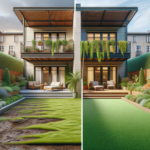Understanding Your Needs and Budget
Embarking on the journey to find the perfect apartment begins with a thorough understanding of your needs and budget. The rental market is diverse, offering a range of options from studio apartments to multi-bedroom units. Each type comes with its own set of amenities and price ranges. Start by listing your non-negotiables, such as location, proximity to work or school, and necessary amenities like parking or pet-friendliness. Simultaneously, assess your financial situation. A common guideline is to allocate no more than 30% of your income to rent. This ensures you maintain a balanced budget, allowing for savings and other expenses. By clearly defining your needs and budget, you streamline the apartment hunting process, making it more efficient and less overwhelming.
Exploring Different Types of Apartments
The variety in apartment types can be both exciting and daunting. Studio apartments are a great choice for individuals seeking affordability and simplicity, while one-bedroom apartments offer more space and privacy. For families or those desiring extra room, two or three-bedroom apartments might be more suitable. Each type has unique features, such as lofts with open floor plans or garden apartments with outdoor spaces. Consider the lifestyle you envision and how each apartment type aligns with it. For instance, if you enjoy hosting gatherings, an apartment with a spacious living area might be ideal. Exploring these options allows you to match your personal preferences with the available choices, ensuring a comfortable living experience.
Evaluating Location and Neighborhood
Location is a pivotal factor in apartment selection, impacting convenience, lifestyle, and cost. Urban areas typically offer vibrant atmospheres with easy access to amenities but may come at a higher price. Suburban locations, on the other hand, often provide more space and a quieter environment. Consider the neighborhood’s safety, the quality of nearby schools if applicable, and the availability of public transportation. Visiting potential neighborhoods at different times of the day can provide insight into traffic patterns and noise levels. Additionally, engaging with current residents can offer valuable perspectives on the community’s vibe. Making an informed location choice enhances your overall satisfaction with your new home.
Understanding Lease Agreements
Lease agreements are legally binding documents that outline the terms of your rental. Understanding these terms is crucial to avoid future disputes. Key components include the duration of the lease, rent amount, payment schedule, and policies on renewals. Be sure to clarify who is responsible for maintenance and repairs, and understand any penalties for breaking the lease early. It’s also important to know the rules regarding alterations to the apartment and subletting. Reading the lease thoroughly and asking questions ensures that you fully comprehend your rights and obligations as a tenant. This knowledge empowers you to make informed decisions and fosters a positive relationship with your landlord.
Tips for a Successful Apartment Viewing
Apartment viewings are your opportunity to get a firsthand look at potential living spaces. Prepare a checklist of questions and observations to make the most of each visit. Check the condition of appliances, water pressure, and the presence of natural light. Pay attention to any signs of damage or pests, and evaluate the overall cleanliness of the building. It’s also wise to test the noise levels by visiting at different times. During the viewing, engage with the landlord or property manager to discuss any concerns and verify the details of the lease. Taking notes and photos can help you compare options later. A thorough viewing process ensures that you choose an apartment that truly meets your needs and expectations.








